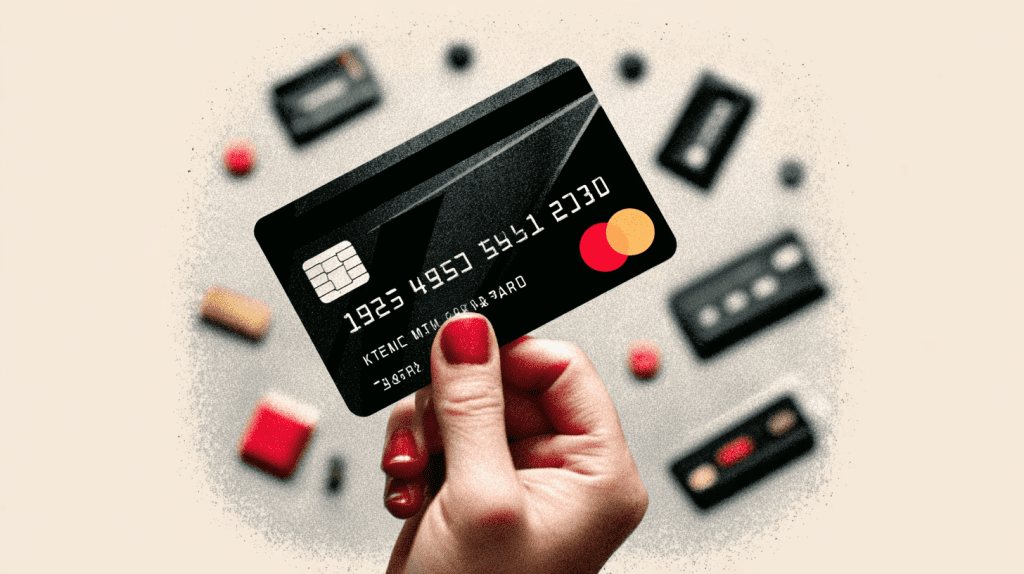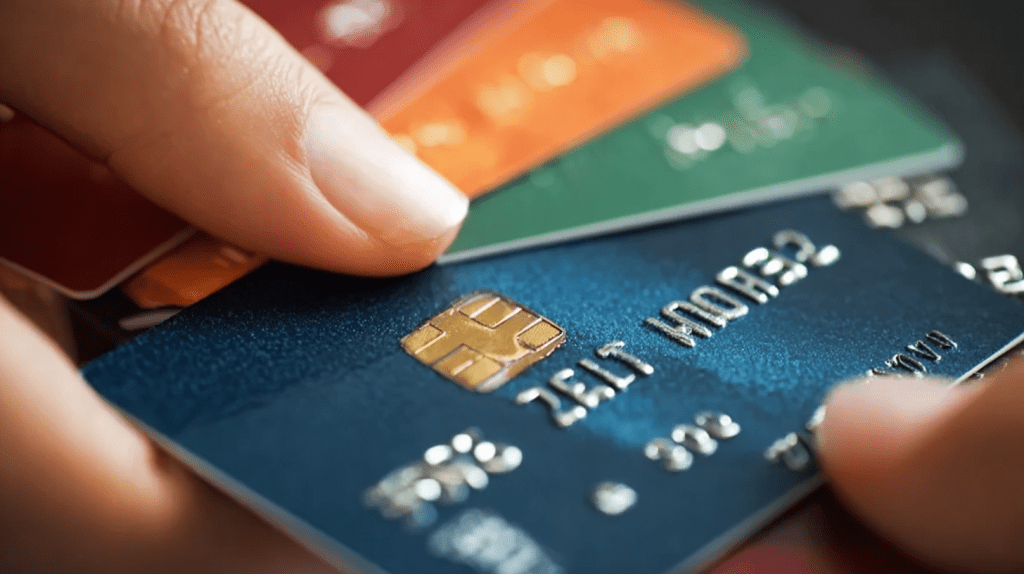Credit cards have become essential financial tools in modern life, yet many people don’t fully understand the mechanics behind them. Whether you’re considering your first card or looking to optimize your existing credit strategy, understanding how credit cards work is crucial for making informed financial decisions. This comprehensive guide breaks down everything from basic definitions to advanced strategies for responsible credit card use.
What Is a Credit Card
Before diving into operational details, establishing a clear credit card definition helps clarify what distinguishes these payment tools from other financial instruments.
Definition and Purpose of Credit Cards
A credit card is a payment instrument issued by financial institutions that allows cardholders to borrow money up to a predetermined limit for purchases or cash advances. Unlike paying with cash or funds directly from a bank account, credit cards provide access to a revolving line of credit that must be repaid according to terms set by the card issuer.
The primary purpose of credit cards extends beyond simple payment convenience. They serve as short-term lending vehicles that enable consumers to make purchases immediately while deferring payment. This timing flexibility can prove valuable for managing cash flow, handling emergencies, or taking advantage of time-sensitive opportunities.
Understanding what are credit cards used for reveals their versatility. Beyond everyday purchases, credit cards facilitate online transactions, provide rental car coverage, enable hotel reservations, and offer consumer protections that cash and debit cards cannot match. They also play a crucial role in building credit history, which affects future borrowing opportunities for mortgages, auto loans, and other major financial products.
Difference Between Credit and Debit Cards
The credit vs debit card distinction confuses many beginners, as both enable electronic payments through similar physical cards and processing networks. However, fundamental differences exist in how transactions are funded and processed.
Debit cards draw directly from funds already in your checking or savings account. When you swipe a debit card, money immediately leaves your account to pay the merchant. This direct connection to existing funds means you cannot spend more than your available balance unless you’ve opted into overdraft protection programs.
Credit cards, by contrast, involve borrowing from the card issuer. Each purchase creates a debt that appears on your monthly statement. You’re not spending your own money initially—you’re borrowing the card issuer’s money with an obligation to repay it later. This borrowing aspect introduces interest charges if balances aren’t paid in full, a cost that doesn’t exist with debit card usage.
Another key difference involves liability protection. Federal law limits credit card fraud liability to $50, and most issuers waive even this amount. Debit card protections prove less robust, particularly if fraud isn’t reported quickly. While unauthorized debit transactions can be reversed, the process may temporarily drain your checking account, potentially causing bounced checks or missed bill payments.
How Do Credit Cards Work in Practice
Understanding the theoretical concept differs from grasping how credit cards work for beginners in day-to-day situations. Several interconnected components determine how credit card work throughout each billing cycle.
Credit Limits and Available Balance
When approved for a credit card, you receive a credit limit—the maximum amount you can borrow at any given time. This credit limit explained simply means the card issuer has assessed your creditworthiness and determined how much debt they’re comfortable extending to you.
Your available balance equals your credit limit minus any outstanding charges, pending transactions, and applicable fees or interest. For example, with a $5,000 credit limit and $1,200 in current charges, your available balance is $3,800. This available balance fluctuates constantly as you make purchases and payments.
Several factors influence initial credit limits, including income, existing debts, credit history length, and credit scores. Issuers periodically review accounts and may increase limits for customers who demonstrate responsible usage patterns. Conversely, limits might decrease if your creditworthiness deteriorates or if you exhibit risky financial behaviors.
Some cardholders wonder what does a credit card do when you exceed your limit. Most modern cards simply decline transactions that would breach your limit, though some issuers offer over-limit protection that allows transactions to process while charging penalty fees. The Credit CARD Act of 2009 requires cardholders to opt into these programs explicitly.
Interest Rates and Annual Percentage Rate (APR)
Interest represents the cost of borrowing and constitutes the primary way card issuers profit from credit card work. The APR credit card metric expresses this cost as an annualized percentage, though interest actually accrues daily based on your average daily balance.
Most credit cards carry variable APRs tied to benchmark rates like the prime rate. When the Federal Reserve adjusts interest rates, credit card APRs typically follow. Current APRs commonly range from 16% to 25% for standard cards, though rates vary based on creditworthiness and card type.
Understanding how does a credit card work regarding interest charges proves crucial for avoiding costly mistakes. Interest applies only to balances carried beyond the grace period—typically 21 to 25 days after your statement closing date. If you pay your full statement balance by the due date, you avoid interest charges entirely despite having borrowed money throughout the billing cycle.
Different APRs may apply to various transaction types. Purchase APRs cover regular spending, while cash advance APRs (usually higher) apply to ATM withdrawals or cash-equivalent transactions. Balance transfer APRs govern debt moved from other cards. Penalty APRs—significantly higher rates triggered by late payments or other violations—can dramatically increase borrowing costs.
Minimum Payments and Billing Cycles
Credit cards working through monthly billing cycles that typically span 28 to 31 days. At the cycle’s end, your issuer generates a statement summarizing all transactions, fees, interest charges, and the total balance owed.
The minimum payment credit card requirement represents the smallest amount you must pay to keep your account in good standing. This minimum typically equals 1% to 3% of your balance plus any interest and fees, or a flat dollar amount like $25—whichever is greater.
While minimum payments prevent late fees and default reporting, paying only the minimum creates expensive long-term consequences. Due to how credit card works with compound interest, minimum payments barely reduce principal balances. A $5,000 balance at 18% APR could take over 13 years to repay making only minimum payments, with total interest exceeding $4,000.
Payment allocation rules also affect how does credit cards work when you pay more than the minimum. The CARD Act requires payments exceeding the minimum to apply first to balances carrying the highest interest rates, helping consumers pay down expensive debt faster.
Types of Credit Cards

The credit card market offers numerous specialized products designed for different consumer needs and financial situations. Understanding these categories helps when choosing the best credit card for your circumstances.
Standard and Student Credit Cards
Standard credit cards provide basic charging privileges without special features or restrictions. These straightforward products suit consumers who want simple payment tools without complex reward programs or annual fees. They typically offer moderate credit limits and competitive interest rates for qualified applicants.
Student credit cards target college students with limited credit histories. These products feature lower credit limits, relaxed approval requirements, and educational resources about responsible credit card use. Many transition to standard cards upon graduation, and some offer rewards tailored to student spending patterns like dining and streaming services.
Rewards and Cashback Cards
Rewards credit cards return a percentage of spending through points, miles, or statement credits. These cards transform everyday purchases into valuable returns, making them popular among consumers who pay balances in full monthly and avoid interest charges that would negate reward value.
Cashback credit cards offer the simplest reward structure, returning 1% to 6% of spending as cash. Flat-rate cards provide consistent percentages across all purchases, while tiered cards offer higher returns in specific categories like groceries, gas, or dining. Rotating category cards change bonus categories quarterly, requiring attention to maximize returns.
Travel rewards cards earn points or miles redeemable for flights, hotels, and travel expenses. These cards often include travel perks like airport lounge access, travel insurance, and elite status with hotel or airline loyalty programs. Annual fees on premium travel cards can exceed $500, justified only by heavy travel spending and benefit utilization.
Secured Credit Cards
The secured vs unsecured credit card distinction centers on collateral requirements. Secured credit cards require security deposits that typically equal your credit limit. This deposit protects the issuer if you default, enabling approval for applicants with poor or nonexistent credit histories.
Despite requiring deposits, secured cards function identically to unsecured cards for purchases and reporting purposes. They help consumers learn how to build credit with a credit card while minimizing issuer risk. After demonstrating responsible usage for several months, many issuers convert secured cards to unsecured products and refund deposits.
Business and Travel Credit Cards
Business credit cards cater to company spending with features like employee cards, expense tracking tools, and higher credit limits reflecting business purchasing needs. These cards often provide rewards on business categories like office supplies, shipping, and telecommunications. They may offer valuable purchase protections and extended payment terms helpful for managing business cash flow.
Premium travel credit cards combine substantial rewards with luxury perks. Beyond earning elevated points on travel and dining, these cards provide benefits like annual travel credits, hotel elite status, concierge services, and comprehensive travel insurance. Understanding what do credit cards do at this premium level reveals how credit products can deliver value beyond simple payment processing.
Benefits of Using a Credit Card

When used responsibly, credit cards offer advantages that alternative payment methods cannot match. These benefits of credit cards extend across multiple financial and practical dimensions.
Building Credit History and Credit Score
Credit cards provide one of the most effective tools for establishing and improving credit profiles. Payment history accounts for approximately 35% of credit scores, making consistent on-time payments crucial. Credit utilization—the percentage of available credit you’re using—represents another 30% of scores.
How does credit card work to build credit? Each month, card issuers report account information to credit bureaus, documenting payment timeliness, balances, and credit limits. This reporting creates the track record that lenders examine when evaluating future loan applications for mortgages, auto financing, or additional credit cards.
Starting with limited credit history, consumers can use credit cards to demonstrate financial responsibility over time. Even small purchases paid in full monthly contribute to positive credit building. Multiple cards can accelerate credit building by diversifying credit profiles and increasing total available credit, though this strategy requires discipline to manage effectively.
Rewards Programs and Cashback
Rewards represent tangible returns on spending that effectively discount purchases or subsidize travel. Strategic use of rewards credit cards can generate hundreds or thousands of dollars in annual value, particularly for households concentrating spending on high-reward cards.
Cashback credit cards provide the simplest value proposition—direct statement credits or deposits requiring no point calculations or redemption complexity. This simplicity suits consumers who prefer straightforward benefits without tracking rotating categories or planning travel redemptions.
Points-based programs offer flexibility, with redemption options spanning travel, gift cards, merchandise, and cash equivalents. Premium travel rewards cards provide outsized value when points are redeemed for business class flights or luxury hotel stays, potentially yielding returns exceeding 5% to 10% of spending.
Fraud Protection and Security Features
Credit cards provide superior fraud protection compared to debit cards or cash. When fraudulent charges appear on credit cards, you’re not out actual money—the disputed amount represents borrowed funds while investigations proceed. This protection prevents checking account drainage that could trigger bounced payments or financial emergencies.
Zero-liability policies from major card networks ensure cardholders don’t pay for unauthorized transactions. Combined with sophisticated fraud monitoring systems that flag suspicious activity, credit cards offer security that builds confidence for online shopping and travel purchases in unfamiliar locations.
Additional security features include virtual card numbers for online shopping, EMV chip technology that makes card duplication difficult, and instant transaction alerts that enable rapid fraud detection. Some cards offer digital wallet integration with tokenization technology that prevents merchants from accessing actual card numbers.
Risks and Drawbacks of Credit Cards
Despite their benefits, credit cards pose significant risks of credit card debt when misused. Understanding these dangers helps users avoid costly mistakes that can damage financial health for years.
High Interest and Debt Risks
Credit card interest rates exceed virtually all other consumer lending products, making carried balances extremely expensive. The risks of credit card debt compound quickly when minimum payments barely cover interest charges, creating debt traps where balances grow despite regular payments.
Psychological factors exacerbate these risks. Credit cards’ abstract nature—paying with plastic rather than parting with physical cash—reduces the psychological pain of spending, potentially leading to overspending. The delayed payment structure allows purchases to feel costless in the moment, with consequences arriving only when statements arrive weeks later.
Debt accumulation can spiral from controllable to overwhelming rapidly. Medical emergencies, job losses, or other financial shocks that prevent full payment for a month or two can trigger interest charges that make catching up increasingly difficult. Once balances grow large relative to income, escape becomes challenging without significant lifestyle changes or external assistance.
Fees and Penalties
Beyond interest charges, various fees increase credit card costs. Annual fees ranging from $0 to $550+ apply to many cards, particularly those with premium rewards programs. Whether these fees make sense depends on whether reward value and benefits exceed costs.
Late payment fees, typically $25 to $40, punish missed or insufficient payments. These fees can trigger additional consequences including penalty APR implementation that dramatically increases interest rates for six months or longer. Multiple late payments within a year escalate fee amounts, and late payments severely damage credit scores.
Cash advance fees, foreign transaction fees, balance transfer fees, and over-limit fees add further costs depending on card usage patterns. Understanding fee structures before applying helps avoid expensive surprises and enables comparison shopping among card options.
Impact on Credit Score
While responsible credit card use builds credit scores, misuse damages them substantially. Late payments remain on credit reports for seven years, immediately dropping scores by 60 to 110 points depending on previous history. Multiple late payments or defaulted accounts can devastate scores for years.
High credit utilization ratio—carrying balances near your credit limits—signals financial stress to credit scoring models and reduces scores. Experts recommend keeping utilization below 30% of total available credit, with utilization below 10% optimal for score maximization.
Opening multiple cards within short periods generates hard inquiries that temporarily reduce scores. Each application typically drops scores by a few points, with effects diminishing over six months and disappearing after two years. However, numerous recent applications signal credit hunger that concerns lenders and may result in denials.
How to Use Credit Cards Responsibly

Maximizing benefits while avoiding pitfalls requires intentional responsible credit card use strategies that treat credit cards as tools rather than extensions of income.
Paying Bills on Time
Payment timeliness ranks as the single most important factor in credit card management. Setting up automatic minimum payments ensures you never miss due dates, though autopay for full balances proves even better for avoiding interest charges entirely.
Calendar reminders, mobile banking alerts, and budget tracking all help ensure timely payments. Consider scheduling payments several days before due dates to account for processing delays, particularly for payments initiated through third-party bill pay services rather than directly with card issuers.
The grace period between statement closing and payment due dates provides float—interest-free borrowing if you pay the full balance. Understanding how a credit card works regarding this grace period enables strategic timing of large purchases to maximize interest-free financing periods while maintaining payment discipline.
Keeping Credit Utilization Low
The credit utilization ratio compares your total credit card balances to total credit limits across all cards. Lower utilization benefits credit scores and signals responsible credit management. Paying balances before statement closing dates keeps reported utilization low even if you later pay in full before the due date.
Requesting credit limit increases reduces utilization ratios without requiring balance reductions, though this strategy works only if higher limits don’t encourage additional spending. Multiple cards distribute spending across larger total credit limits, naturally lowering utilization if balances don’t increase proportionally.
Strategic balance distribution helps when you cannot avoid carrying balances temporarily. Spreading $3,000 across three cards with $5,000 limits each yields 20% utilization, while concentrating that balance on one card creates 60% utilization on that account and 20% overall—but credit scoring considers both overall and per-card utilization.
Avoiding Unnecessary Debt
Responsible credit card use means treating cards as convenient payment methods rather than income supplements. Charging only amounts you can afford to pay in full prevents interest charges and debt accumulation that can spiral out of control.
Creating detailed budgets that account for credit card purchases helps maintain spending discipline. Tracking purchases in budgeting apps or spreadsheets prevents surprise statements that exceed payment capacity. Some consumers find that limiting credit card use to specific categories like gas or groceries while using debit for discretionary spending maintains control.
Emergency funds reduce reliance on credit cards for unexpected expenses. While credit cards provide valuable backup during true emergencies, maintaining savings prevents short-term setbacks from becoming long-term debt problems. Financial advisors typically recommend three to six months of expenses in accessible emergency savings.
Tips for Choosing the Right Credit Card

The credit card market offers hundreds of products with varying terms, fees, and features. Selecting appropriate cards requires evaluating personal financial situations and spending patterns.
Comparing Interest Rates and Fees
For consumers who might carry balances occasionally, low APR cards prove more valuable than cards with high rewards but elevated interest rates. Interest charges on carried balances typically exceed any rewards earned, making low rates the priority for those without perfect payment discipline.
Fee structures deserve careful analysis. No annual fee cards suit many consumers, particularly those with limited spending who won’t earn enough rewards to justify fees. Premium cards charging substantial annual fees make sense only when rewards value and benefits clearly exceed costs—a calculation requiring honest assessment of spending levels and benefit utilization.
Balance transfer offers with 0% introductory APR periods help consolidate existing debt while avoiding interest charges, but balance transfer fees (typically 3% to 5%) and post-promotional APRs must be evaluated. These cards serve specific purposes rather than functioning as everyday payment tools.
Evaluating Rewards and Benefits
Reward program assessment requires matching card benefits to actual spending patterns. A card offering 3% on dining provides little value if you rarely eat out, while a card earning 6% on groceries benefits households with substantial supermarket spending.
Redemption flexibility matters as much as earning rates. Points locked into single airline or hotel programs lose value if those brands don’t serve destinations you visit. Cashback credit cards or flexible points programs that transfer to multiple partners provide versatility that specialized programs cannot match.
Additional benefits like travel insurance, purchase protection, extended warranties, and rental car coverage add value that’s difficult to quantify but can prove valuable when needed. Evaluating these perks requires considering both likelihood of use and potential value in covered scenarios.
Considering Your Spending Habits
Honest self-assessment determines which cards align with your financial habits and goals. Consumers who pay in full monthly should prioritize rewards over interest rates, while those who occasionally carry balances benefit from low APR cards even if rewards prove minimal.
Organizational capacity affects card choice. Simple cashback cards requiring no attention suit set-it-and-forget-it approaches, while optimizing rotating category cards or maintaining multiple cards to maximize category bonuses demands attention and tracking that not everyone enjoys.
Credit history determines available options. Limited credit history restricts choices to student cards or secured cards until track records develop, while excellent credit opens access to premium cards with substantial benefits. Applying for cards matching your credit profile increases approval odds and avoids hard inquiries from hopeless applications.
Conclusion: Understanding How Credit Cards Work to Build Financial Health
Grasping how credit cards work? requires understanding multiple interconnected elements—from interest calculations and billing cycles to reward optimization and credit building strategies. This knowledge transforms credit cards from mysterious financial products into powerful tools for building credit, earning rewards, and managing finances effectively.
The key to success lies in approaching credit cards as convenient payment methods that must be managed responsibly rather than as emergency funding sources or income extensions. Understanding how to credit cards work in practice—including how does credit card work regarding interest, fees, and credit reporting—enables informed decisions that maximize benefits while avoiding costly pitfalls.
For beginners wondering credit card how it works, the essential principle is simple: credit cards loan you money for purchases that must be repaid, preferably in full each month to avoid interest charges. Beyond this basic function, credit cards serve multiple purposes including credit building, reward earning, fraud protection, and payment convenience.
Whether you’re just learning how do credit cards work for beginners or refining existing credit strategies, remember that responsible usage patterns matter more than any specific card features. Paying bills on time, maintaining low utilization, and avoiding unnecessary debt form the foundation of successful credit card use regardless of which products you choose. Master these fundamentals, and credit cards become valuable financial allies rather than sources of stress and debt.











